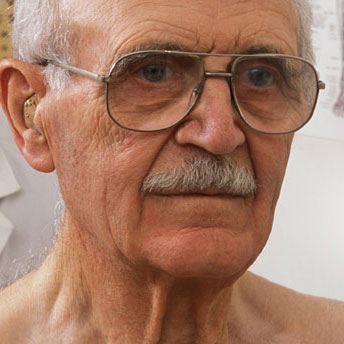
Fibromyalgia simply describes a set of symptoms and is understood to have no known cause. However, when a deeper diagnosis and a medical blue print are established it becomes much more apparent how to treat each person’s expression of the disease.
Unipathic Medicine Treating Fibromyalgia
Fibromyalgia is a condition that Unipathic Medicine has frequently encountered while guiding physicians for the last 15 years in the treatment of cancer and chronic diseases. For a basic definition, and according to WebMD, “Fibromyalgia syndrome affects the muscles and soft tissue. Symptoms include chronic muscle pain, fatigue, sleep problems, and painful tender points or trigger points, which can be relieved through medications, lifestyle changes and stress management.” Fibromyalgia has many pitfalls, and for patients it is important that they do not fall victim to them. Having true knowledge on how to approach chronic diseases is extremely important when approaching this issue. To do this, we address the root causes of these diseases with state of the art technology, diagnostics and treatment methods. This article is dedicated to some of the pitfalls of fibromyalgia that patients and physicians might run into, and we endeavor to explain the best combination of treatments that are needed to find relief.
SSome Unipathic patients have been previously misdiagnosed with fibromyalgia and this is because many doctors have difficulty separating diseases that mimic similar symptoms, such as Lyme disease. To reinforce the point, and according to CNN/Health Magazine, “When doctors can't find a root cause for a patient's chronic pain and fatigue, they often settle on this (fibromyalgia) diagnosis.” The current fibromyalgia diagnosis is not detailed enough and in response, Unipathic Medicine provides patients with a proper diagnosis without the final outcome being pain medication, sleep aids or antidepressants. An example Unipathic Medicine likes to use is that of a patient named Cindy, who had fibromyalgia and was taking antidepressants. After years of no improvement, a battery of tests was performed on her and it was found she had a heavy metal infection. Once this deeper diagnosis was found and addressed, a strange thing happened…she got better. This is an example of the true “medical blueprint” being applied to a patient and Unipathic Medicine implements this for every unique patient and case of disease.
A major pitfall in fibromyalgia treatment is the belief that a single pharmacologic approach taken by physicians for all of a patient’s symptoms will address the problem. Another is that bio identical hormones are enough to treat the disease. None of this works, however, because patients, symptoms and human factors are all different. From Hassett and Gevirtz’s work published in Rheumatic Disease Clinics of North America, it is hard to fully understand and diagnose fibromyalgia in part because, “Due to the dynamic and complex nature of chronic pain, successful treatment usually requires addressing behavioral, cognitive and affective processes “(3). This is not covered sufficiently within mainstream medical, mostly because they are too concerned with the drug model and a quick fix. Proper diagnosis in the integrative model goes way beyond these common treatments and knowing this we constructed the medical blueprint which delves into patient history, genetic susceptibilities and the causes of disease.
Proper treatment for fibromyalgia can be a complex issue. Unipathic Medicine is aligned with the statement from Sarzi-Puttini in, “Treatment Strategy in Fibromyalgia Syndrome: Where are we now?” that, “An individually tailored multidisciplinary pharmacologic, rehabilitative, and cognitive–behavioral approach currently seems to be the most effective (when treating fibromyalgia)” (4). We are now in an era of medicine where we can combine the best treatments from all over the world and unify them under one roof in an individually personalized manner that works best to remedy fibromyalgia. This includes extensive testing and matching the results with targeted treatments. It is crucial for physicians and patients to have access to these kinds of treatment options. If you have any questions about Unipathic Medicine or wish to learn more, please don’t hesitate to contact us.
References
[1] http://www.webmd.com/fibromyalgia/
[2] Macmillan, Amanda. “15 diseases doctors often get wrong.” Health Magazine. September 3, 2014 on CNN. http://www.cnn.com/2014/08/26/health/diseases-doctors-get-wrong/index.html?hpt=he_bn6
[3] Hassett, Afton and Richard Gevirtz. “Nonpharmacologic Treatment for Fibromyalgia: Patient Education, Cognitive-Behavioral Therapy, Relaxation Techniques, and Complementary and Alternative medicine.” Rheum Dis Clin North Am. May 2009; 35(2): 393–407. http://www.ncbi.nlm.nih.gov/pmc/articles/PMC2743408/. Accessed August 2014.
[4] Sarzi-Puttini, Piercarlo, et all. “Treatment Strategy in Fibromyalgia Syndrome: Where Are We Now?” Seminars in Arthritis and Rheumatism Volume 37, Issue 6, Pages 353–365, June 2008. http://www.semarthritisrheumatism.com/article/S0049-0172(07)00144-8/abstract
Questions?
Would you like to learn more about Unipathic Medicine and options for you or a loved one? Send us a message and a well-trained member of our team will promptly respond. Best of health!
Your message has been sent!2024 ™ Unipathic Medicine. All Rights Reserved. Home |Disclaimer | Privacy Policy | Terms of Use



